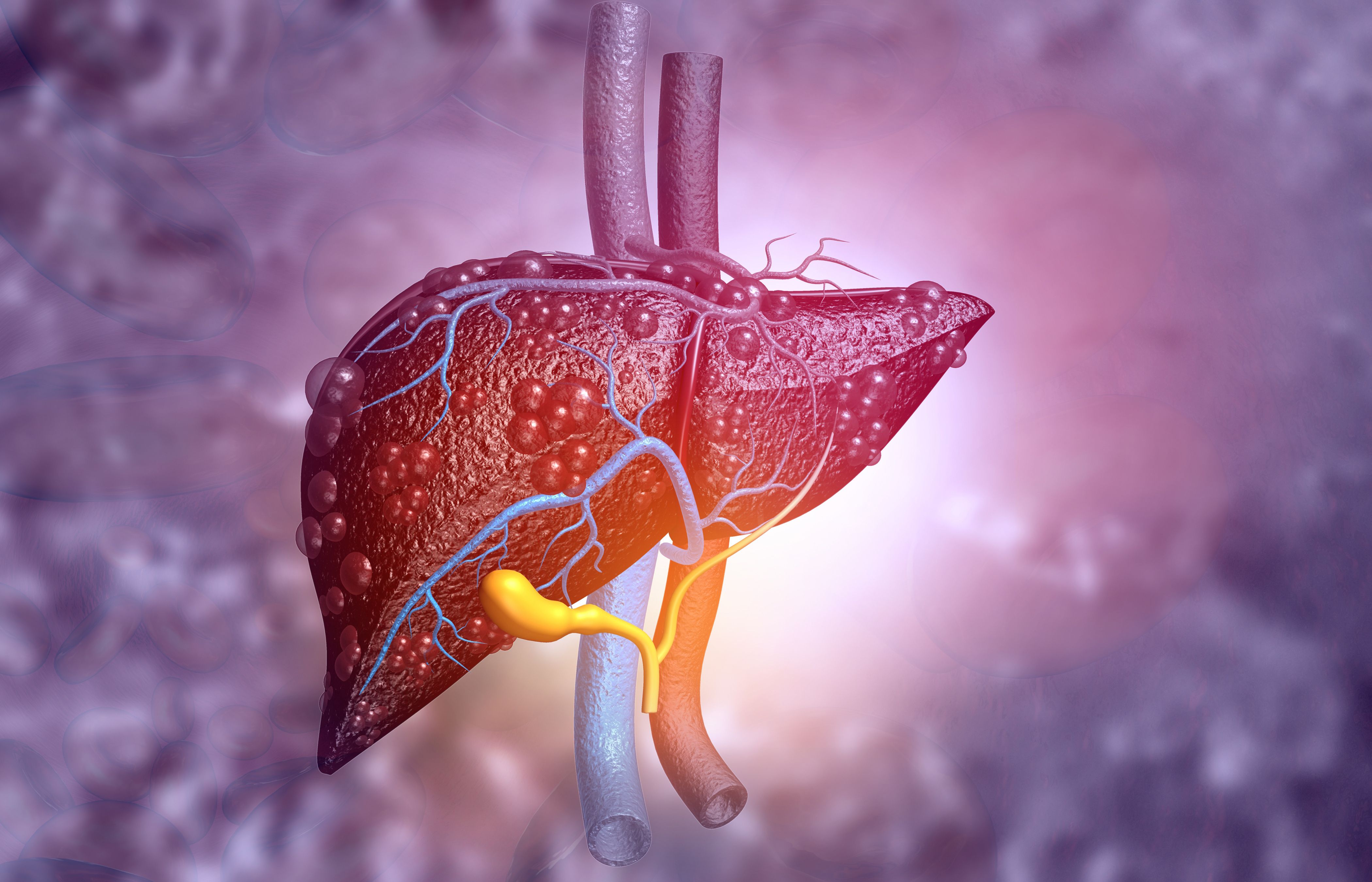- Sustainability
- DE&I
- Pandemic
- Finance
- Legal
- Technology
- Regulatory
- Global
- Pricing
- Strategy
- R&D/Clinical Trials
- Opinion
- Executive Roundtable
- Sales & Marketing
- Executive Profiles
- Leadership
- Market Access
- Patient Engagement
- Supply Chain
- Industry Trends
Boehringer Ingelheim Reports 'Groundbreaking' Results With Survodutide in Treatment of Metabolic Dysfunction-Associated Steatohepatitis
Survodutide, a GLP-1 receptor dual agonist with a novel mechanism of action, was the first treatment to produce findings this significant in a Phase II trial of metabolic dysfunction-associated steatohepatitis.
Image credit: Rasi | stock.adobe.com

Survodutide, Boehringer Ingelheim’s glucagon-like peptide-1 (GLP-1) receptor dual agonist, demonstrated what the company described as “groundbreaking” results in the treatment of liver disease associated with metabolic dysfunction-associated steatohepatitis (MASH).1 According to the results of a Phase II trial (NCT04771273),2 83.0% of patients with MASH who were administered survodutide achieved a statistically significant improvement in the condition compared with 18.2% of those in the placebo cohort.
“I am thrilled to see these statistically significant results from the Phase II trial of survodutide in MASH and fibrosis. These data position survodutide as a potential leading treatment for a population with great unmet medical needs, and will bring hope to people living with MASH and with fibrosis,” trial principal investigator Arun Sanyal, MD, professor of Medicine, Physiology and Molecular Pathology at Virginia Commonwealth University School of Medicine, said in a press release. “I am looking forward to sharing further detail on key secondary endpoints, including the percentage of adults who saw an improvement in fibrosis, at a congress in the first half of this year.”1
The double-blind, placebo-controlled trial, titled “A Study to Test Safety and Efficacy of BI456906 in Adults With Non-alcoholic Steatohepatitis (NASH) and Fibrosis (F1-F3),” achieved the primary endpoint biopsy-proven improvement in MASH after 48 weeks of treatment without patients experiencing a worsening of fibrosis stages F1, F2, and F3.
MASH, formerly known as non-alcoholic steatohepatitis (NASH), is a chronic and progressive form of liver disease associated with the build-up of fat in the liver. The condition is a more severe form of metabolic dysfunction-associated steatotic liver disease (MASLD). Risk factors for MASLD include obesity, impaired glucose metabolism, high blood pressure, and atherogenic dyslipidemia. As such, insulin resistance may play a significant role in the development of MASLD.3
“Considering that the development of cardiovascular diseases determines the prognosis of MASLD patients, the therapeutic interventions for MASLD should reduce body weight and improve coronary risk factors, in addition to an improving in liver function,” wrote the authors of a study published by the International Journal of Molecular Sciences. “Lifestyle modifications, such as improved diet and increased exercise, and surgical interventions, such as bariatric surgery and intragastric balloons, have shown to improve MASLD by reducing body weight. Sodium glucose cotransporter 2 inhibitors (SGLT2i) and glucagon-like peptide-1 receptor agonists (GLP-1RAs) have been shown to improve coronary risk factors and to suppress the occurrence of cardiovascular diseases.”3
According to Boehringer Ingelheim, survodutide has displayed the potential of becoming a best-in-class treatment for MASH. The GLP-1 receptor dual agonist with a novel mechanism of action was the first treatment to produce a benefit this significant in a Phase II trial among patients with MASH, according to the investigators. They noted that the glucagon agonist component of survodutide could increase energy expenditure, with the potential to help improve the development of fibrosis.
In the Phase II trial, investigators analyzed survodutide at dose levels of 2.4 mg, 4.8 mg, and 6.0 mg, all of which showed an improvement in MASH. In terms of safety, survodutide was not associated with any reports of unexpected safety or tolerability challenges across dosing levels. In addition to the Phase II trial, survodutide is also being analyzed in five Phase III trials among patients with overweight and obesity.
“These MASH results show survodutide has potential to become a best-in-class treatment, and we believe its true differentiator is the action of the glucagon receptor agonism which works directly on the liver,” Carinne Brouillon, Boehringer Ingelheim head of Human Pharma, said in a press release. “In order to bring this potential treatment to the more than 1 billion people affected by interconnected cardiovascular, renal, metabolic diseases, we will move forward as quickly as possible in MASH. We are also progressing with survodutide in other related conditions, having already initiated our Phase III clinical trial program for obesity.”1
References
1. Survodutide Phase II trial shows 83% of adults treated achieved groundbreaking results in liver disease due to MASH, with significant improvements in fibrosis. Boehringer Ingelheim. February 26, 2024. Accessed February 26, 2024. https://www.boehringer-ingelheim.com/human-health/metabolic-diseases/survodutide-top-line-results-mash-fibrosis
2. A Study to Test Safety and Efficacy of BI456906 in Adults With Non-alcoholic Steatohepatitis (NASH) and Fibrosis (F1-F3). ClinicalTrials.gov. Website. Updated February 9, 2024. Accessed February 26, 2024.
3. Yanai H, Adachi H, Hakoshima M, Iida S, Katsuyama H. Metabolic-Dysfunction-Associated Steatotic Liver Disease-Its Pathophysiology, Association with Atherosclerosis and Cardiovascular Disease, and Treatments. Int J Mol Sci. 2023 Oct 23;24(20):15473. doi: 10.3390/ijms242015473. PMID: 37895151; PMCID: PMC10607514.
Cell and Gene Therapy Check-in 2024
January 18th 2024Fran Gregory, VP of Emerging Therapies, Cardinal Health discusses her career, how both CAR-T therapies and personalization have been gaining momentum and what kind of progress we expect to see from them, some of the biggest hurdles facing their section of the industry, the importance of patient advocacy and so much more.
